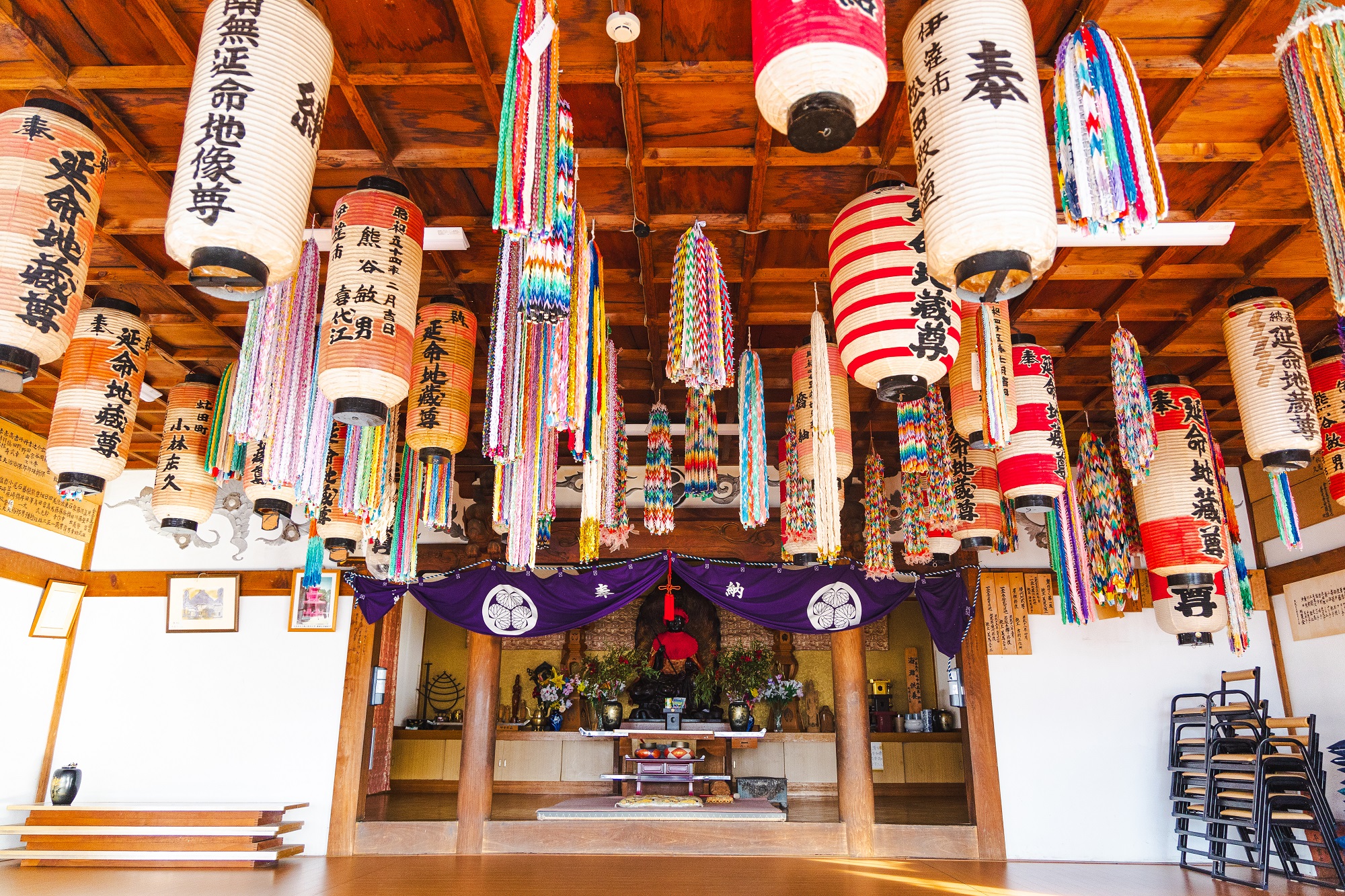March 11, 2024
NEWS & TOPICS
Cultures Nurtured by Mount Usu

From prehistoric peoples to indigenous Ainu and even Japanese Christians fleeing Edo-era persecution, people have been living in the volcanic landscape of Mt. Usu for thousands of years. In large part that’s thanks to the mountain itself, with an eruption roughly 10,000 years ago generating a landslide into the ocean that shaped natural bays ideal for settlements and trading posts, in addition to creating a rich ecosystem home to an abundance of seafood.
Traces of the Jomon
The earliest known settlers around Mt. Usu and neighboring Lake Toya (both now within Toya-Usu UNESCO Global Geopark) date back as far as 3,800 BCE, to the latter part of the Jomon era: a period that saw the solidification of sedentism and spirituality. That’s something you can learn more about near Toya Station, at the Irie-Takasago Shell Mound Center and nearby Irie and Takasago sites.
The finds from shell mounds here show how the late-Jomon people hunted mammals like deer, fished for herring, rockfish, and shellfish, and crafted tools from bones and antlers. From burial mounds in the area, researchers have also gained insight into Jomon spirituality, unearthing clay figurines now on display at the museum alongside decorated pottery and accessories made from jade and obsidian. There are even finds that suggest the Jomon had developed a strong sense of community: the bones of one adult male affected by muscular atrophy and paralysis hint at a society that took care of its most vulnerable members.
Hokkaido’s Indigenous People
A culture thought to have taken shape in the 12th or 13th centuries, the Ainu are considered the indigenous people of Hokkaido and Sakhalin; traditionally a group of fishers and hunter-gatherers deeply in tune with nature, who also traded with other cultures, including the Japanese immediately to the south and the Ryukyu Kingdom in what is now Okinawa.
While the Ainu’s history hasn’t been an easy one, with forced assimilation by Japan in the 1800s and 1900s and subsequent issues such as discrimination, the Ainu are now officially recognized as an indigenous people. With that, there are increasing efforts to recognize and reclaim Ainu culture – most notably with the creation of Upopoy National Ainu Museum and Park, an hour east of Toya on the same train line that connects Toya with Sapporo.
Although Toya itself doesn’t have any specific Ainu sites, Ainu culture has nevertheless left an indelible legacy here. Take the name Toya: that means “lake” in the Ainu language. Elsewhere in Hokkaido you’ll find numerous similar examples: Sapporo, is “dry, large river” (sat poro pet) while Niseko derives from “cliff jutting over a river” (nisey an ko pet).
“Ainu isn’t traditionally a written language,” explains local guide Rie Egawa. “It’s very practical, used to describe places or things of importance to the Ainu. So, the Ainu wouldn’t give a name to a grass they wouldn’t use, or even to unused parts of a plant. Instead, they might name only the root of a plant, if the root was the practical part.”
Buddhism and Hidden Christians
As early as the 800s, the Buddhist priest Ennin is said to have come from Japan and built a structure in Usu to enshrine an Amida Buddha statue, in the process establishing what is today known as Usu-Zenkoji Temple. Like many temples, Usu Zenkoji has been through multiple incarnations over the years, but as the temple museum’s curator and head priest’s wife, Shinri Kitachi details on a tour of the grounds, it’s played an integral role in many people’s lives.
“In 1804, shogun Tokugawa Ienari ordered the construction of three Buddhist temples in southern Hokkaido: Kokutaiji in Akkeshi, Tojuin in Samani, and a new temple here in Usu, on the same site where Ennin initially enshrined his statue in the 800s,” Kitachi says. “Ienari’s aim was threefold: to prevent Russia from claiming the territory, but also to create places to pray for officials and workers from mainland Japan who had passed away in Hokkaido and to spread Buddhism to the Ainu.”
At the temple’s appointment-only Treasure Museum, you can see drawings that depict early meetings between monks and the Ainu, as well as traditional Ainu items such as a patterned cotton jacket and ceremonial lacquerware tools. There are also Important Cultural Properties such as Buddhist statues.
As Kitachi points out, some relics here tell the tale of Japan’s 17th-century “hidden Christians”, who fled from religious persecution on the mainland. “We have an Oribe-type stone lantern brought by workers from Nagasaki, who had to practice Christianity in secret after the Tokugawa shogunate banned it in 1614. The base has a carving of the Virgin Mary disguised as Kannon Bodhisattva, with the upper sides rounded to resemble a cross.”
- HOME
- NEWS & TOPICS
- Cultures Nurtured by Mount Usu


